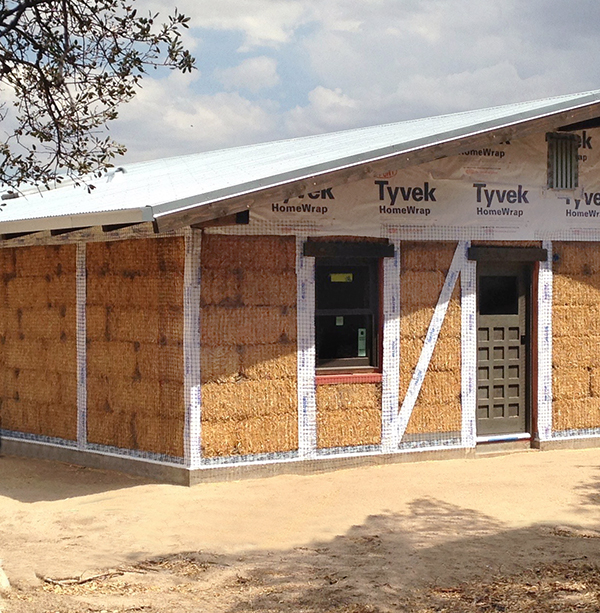For the last 10 years, we have worked tirelessly to get more straw bale homes designed and built. For a while, it looked like the best strategy would be to design the buildings ourselves so they would be well designed for straw, and also to general contract the projects ourselves to make sure that the people in charge knew how to build with straw, and then also to do the bale, lath, and plaster work ourselves since it is our specialty. After seeing this cycle through for a few houses, we realized that we were doing the opposite of our goal to get more straw bale homes designed and built: we had become a bottleneck for straw bale building because we were too busy with the lengthy design and permitting process to take on more projects, or we were too tied up with the process of general contracting a whole house to take on more projects and we didn’t have enough experienced designers and builders to refer people to. We needed to create more capacity.
Since we had no interest in becoming a large, impersonal contracting company, we decided that networking was the way to go. So this is how we’re doing it now: when a potential design-build client contacts us, we put them in touch with designers we know who have made a commitment to designing well with straw. We stay involved with the design as consultants, reviewing the plans and making strategic suggestions before the plans are permitted. We also consult with the general contractor — usually someone the client has found who is interested in building with straw but has little to no experience with it — to help them and their subcontractor understand the crucial differences. Then, when it’s time to stack the straw, lath the bales, and apply the natural plasters, we come in and do this specialized work ourselves.
This strategy means that we are still involved early enough in the development to make sure the plans are well designed for straw, we stay involved to make sure the people in charge of the project know how to build with straw, and we do the specialized work specific to the bales and plasters. This frees us up to help more clients and it also expands the number of designers and builders who have experience with straw. At some point, we may make ourselves redundant by sharing our hard-won knowledge so widely but we would consider that success because the goal is to get as many straw bale homes as possible built.
If you are interested in building with bales — for yourself, as a designer, or as a contractor — please get in touch with us and become part of our network.
~ Rebecca & Mike

